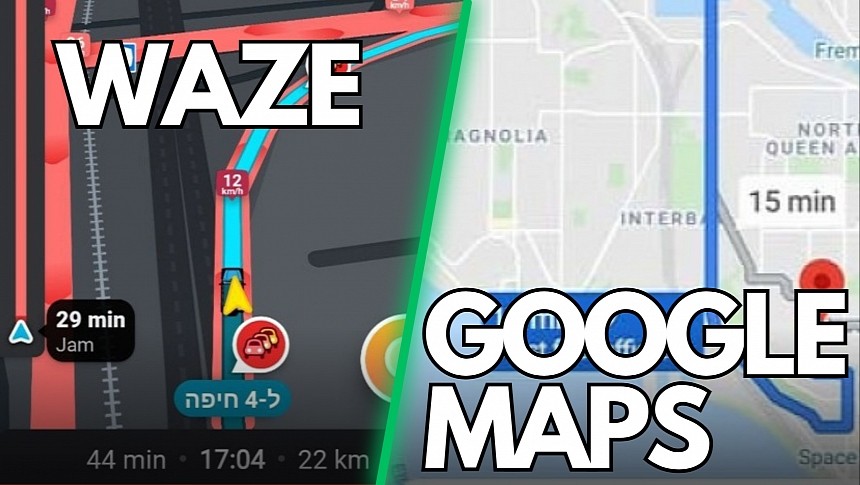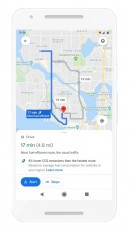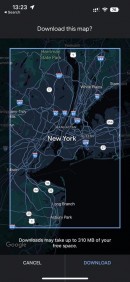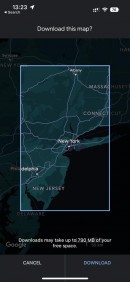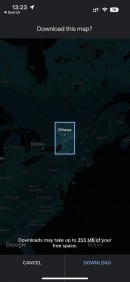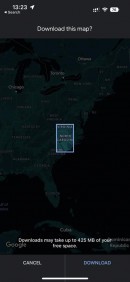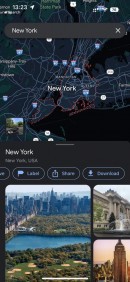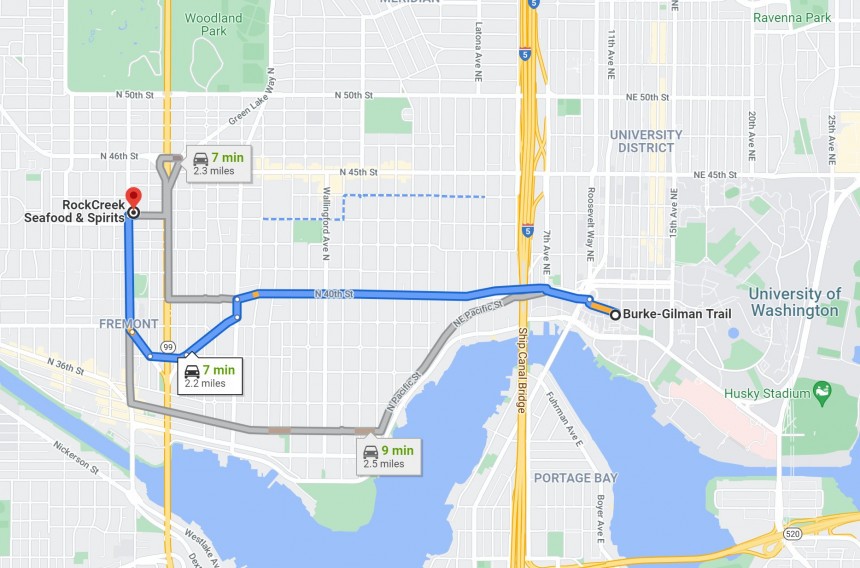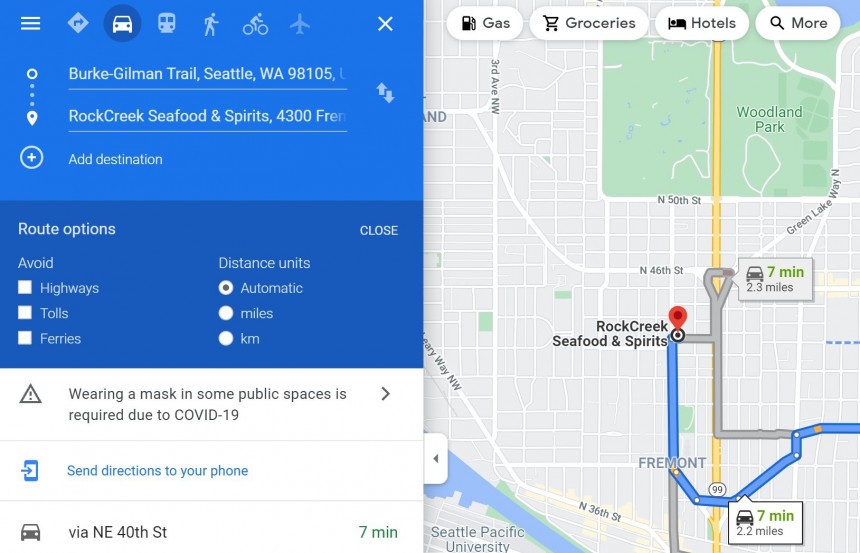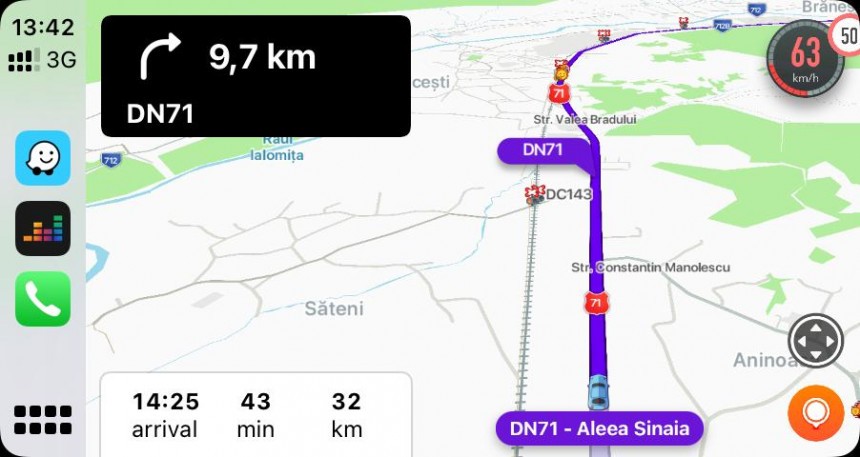I'm seeing more and more people who don't understand why Google keeps Google Maps and Waze, two apparently identical apps, on the market instead of merging them and creating an almighty navigation.
While I don't have the right answer but only assumptions, everybody must keep in mind that Google Maps and Waze aren't by any means identical. They have different purposes, different features, and a different feature (or at least, that's what my sources recently told me, emphasizing that Google isn't planning to kill off Waze).
Google Maps is an all-in-one mapping platform that evolved beyond the navigation space a long time ago. It's now supposed to offer a complete package, including exploration features, business reviews, store information, and a navigation component that helps users go from where they are to where they want to be faster, safer, and more conveniently.
Waze is all about traffic navigation. Unlike Google Maps, it can't run without an Internet connection and uses a crowdsourcing engine to remain up-to-date with what's happening on the road. Waze is more accurate than Google Maps from a traffic information perspective, particularly thanks to users submitting reports about traffic jams, accidents, speed traps, and other incidents on their routes.
Google Maps and Waze already exchanged several features, but the feature that the latter should steal from its sibling is support for fuel-efficient routes.
My daily commute is a nightmare every time it rains. I typically use Waze to find a faster route, and today, while I was sitting in traffic and spamming the re-route option to evade a horrible traffic jam, it hit me.
All these cars sitting in bumper-to-bumper traffic burn a lot of fuel, mostly because the majority of drivers use Waze (the application has an incredible user base in my hometown) specifically to look for a faster route.
What if Waze also comes with an option to search for fuel-efficient routes?
The feature has been available for several years in Google Maps, and the Mountain View-based search giant recently expanded it to India. It claims fuel-efficient routing works like a charm, as it has already helped cut emissions equivalent to taking 500,000 cars off the road.
Fuel-efficient routes try to look for alternatives, taking more factors into account, including the road incline, the road conditions, and the average speed. A complex algorithm estimates the fuel consumption and compares the ETA to the fastest route. You'll see both recommendations in the route selection screen in Google Maps, so if you want to reduce fuel consumption and cut your car's carbon footprint, you can use the fuel-efficient route to drive to your destination. The ETA shouldn't be considerably higher, and in some cases, it helps avoid traffic jams altogether (though the distance could be much longer).
The feature is exclusive to Google Maps, so Waze continues to search exclusively for the fastest route to the destination.
As a traffic navigation focusing only on providing guidance to your destination, Waze also needs fuel-efficient routes. Millions of users need it, and if the suggested route doesn't add more than a couple of minutes to the ETA, why not use an alternative that helps reduce consumption and carbon emissions?
Waze needs innovative features, especially as the lack of innovations keeps pushing users to competing products. Many people believe that Google doesn't want to invest in new features specifically because Waze's feature is tied to Google Maps, as the company could eventually merge them and kill off the traffic navigation app.
While Google is Google, and anything can change overnight, I'm told Waze won't cease to exist. Google Maps and Waze will live on as two separate apps, but to maintain its market share, the latter needs new features to keep up with the modern world.
The feature lineup in Waze has barely improved in the last few years. The company already promised a slew of new features, such as support for speed bump warnings, but its focus now seems to be removing options rather than adding new goodies. Some report types are going away, including hidden police or speed traps on the other side of the road, as the company wants to simplify the reporting experience.
The eco-friendly routes in Waze would help the millions of users running the app beat the nightmare traffic while also helping the environment. It doesn't mean fuel-efficient routes must be enforced in Waze. Users should still be allowed to choose what route they want to use (similar to Google Maps), but I wouldn't mind using a fuel-efficient route to arrive at the destination if I'm not in a rush and it doesn't add more than five minutes to my ETA.
Time will tell if Waze is still interested in borrowing Google Maps' ideas, but in the long term, adopting innovations might be the only way to keep up with the rapidly evolving navigation space.
Google Maps is an all-in-one mapping platform that evolved beyond the navigation space a long time ago. It's now supposed to offer a complete package, including exploration features, business reviews, store information, and a navigation component that helps users go from where they are to where they want to be faster, safer, and more conveniently.
Waze is all about traffic navigation. Unlike Google Maps, it can't run without an Internet connection and uses a crowdsourcing engine to remain up-to-date with what's happening on the road. Waze is more accurate than Google Maps from a traffic information perspective, particularly thanks to users submitting reports about traffic jams, accidents, speed traps, and other incidents on their routes.
My daily commute is a nightmare every time it rains. I typically use Waze to find a faster route, and today, while I was sitting in traffic and spamming the re-route option to evade a horrible traffic jam, it hit me.
All these cars sitting in bumper-to-bumper traffic burn a lot of fuel, mostly because the majority of drivers use Waze (the application has an incredible user base in my hometown) specifically to look for a faster route.
What if Waze also comes with an option to search for fuel-efficient routes?
Fuel-efficient routes try to look for alternatives, taking more factors into account, including the road incline, the road conditions, and the average speed. A complex algorithm estimates the fuel consumption and compares the ETA to the fastest route. You'll see both recommendations in the route selection screen in Google Maps, so if you want to reduce fuel consumption and cut your car's carbon footprint, you can use the fuel-efficient route to drive to your destination. The ETA shouldn't be considerably higher, and in some cases, it helps avoid traffic jams altogether (though the distance could be much longer).
The feature is exclusive to Google Maps, so Waze continues to search exclusively for the fastest route to the destination.
As a traffic navigation focusing only on providing guidance to your destination, Waze also needs fuel-efficient routes. Millions of users need it, and if the suggested route doesn't add more than a couple of minutes to the ETA, why not use an alternative that helps reduce consumption and carbon emissions?
While Google is Google, and anything can change overnight, I'm told Waze won't cease to exist. Google Maps and Waze will live on as two separate apps, but to maintain its market share, the latter needs new features to keep up with the modern world.
The feature lineup in Waze has barely improved in the last few years. The company already promised a slew of new features, such as support for speed bump warnings, but its focus now seems to be removing options rather than adding new goodies. Some report types are going away, including hidden police or speed traps on the other side of the road, as the company wants to simplify the reporting experience.
The eco-friendly routes in Waze would help the millions of users running the app beat the nightmare traffic while also helping the environment. It doesn't mean fuel-efficient routes must be enforced in Waze. Users should still be allowed to choose what route they want to use (similar to Google Maps), but I wouldn't mind using a fuel-efficient route to arrive at the destination if I'm not in a rush and it doesn't add more than five minutes to my ETA.
Time will tell if Waze is still interested in borrowing Google Maps' ideas, but in the long term, adopting innovations might be the only way to keep up with the rapidly evolving navigation space.
